Learn to make Casatiello, a savory, stuffed Easter bread from Naples! You'll love this lard bread filled with salami, Pecorino Romano and black pepper. It's one of my most special Italian Bread Recipes, given to me by my Neapolitan mom!
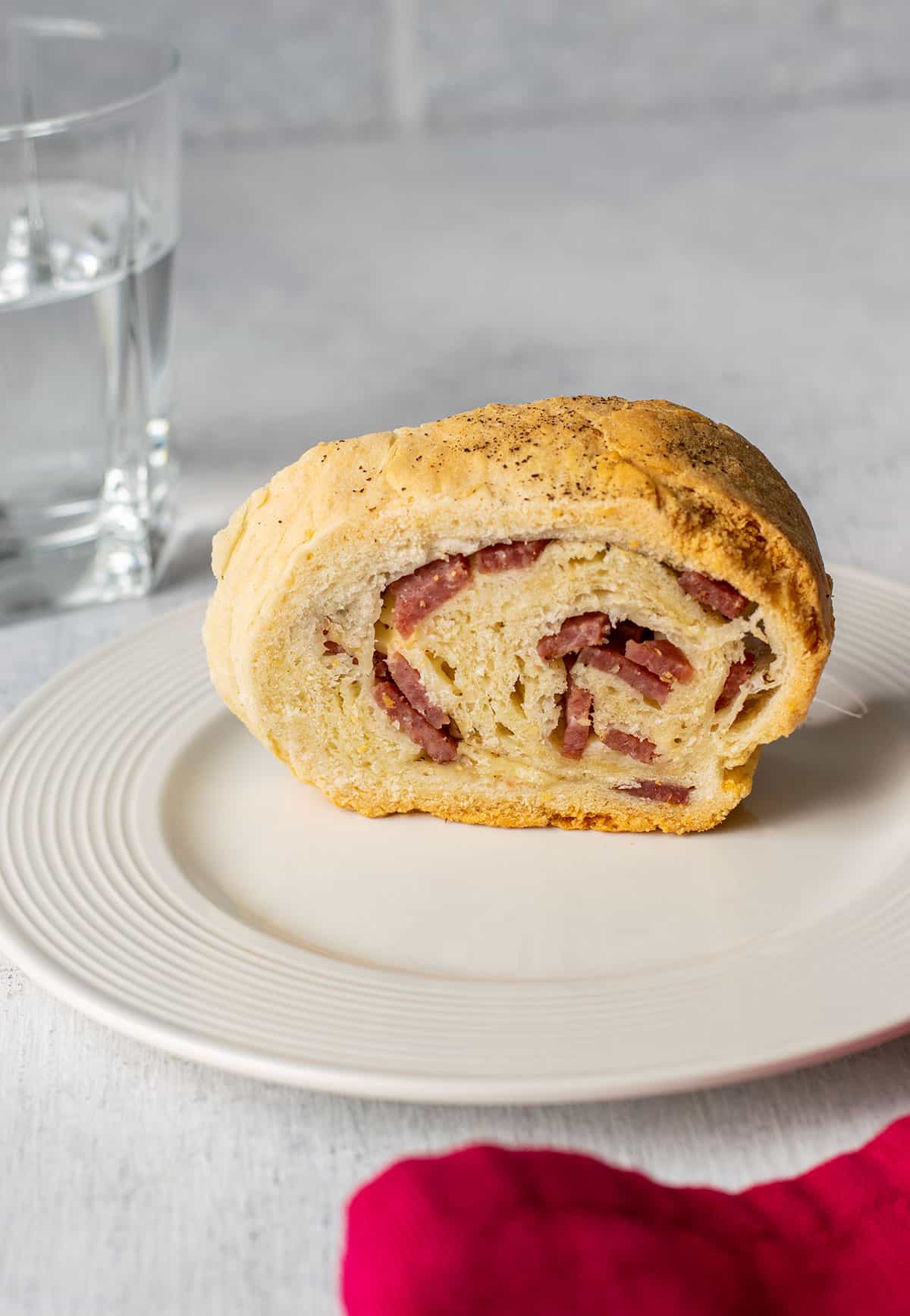
In my family, it wouldn't be Easter without Casatiello. This savory, stuffed bread ring with salami, Pecorino Romano, black pepper and lard is so decadent and delicious, it's almost sinful.
Except it's not, because it's Easter bread, haha!
Mom is from Naples and always made Casatiello weeks ahead of time so we could enjoy it with dinner on Easter Sunday. She would make at least six of these wreath-shaped loaves and store them in the freezer so she could hand them out to family members to take home.
In the last couple of years, she has passed down her recipe to me so I can take over the Casatiello-making duties. I've already recruited my son to help, and yes I do have three loaves in my freezer. And yes, we already ate a fourth one!
Recipe ingredients
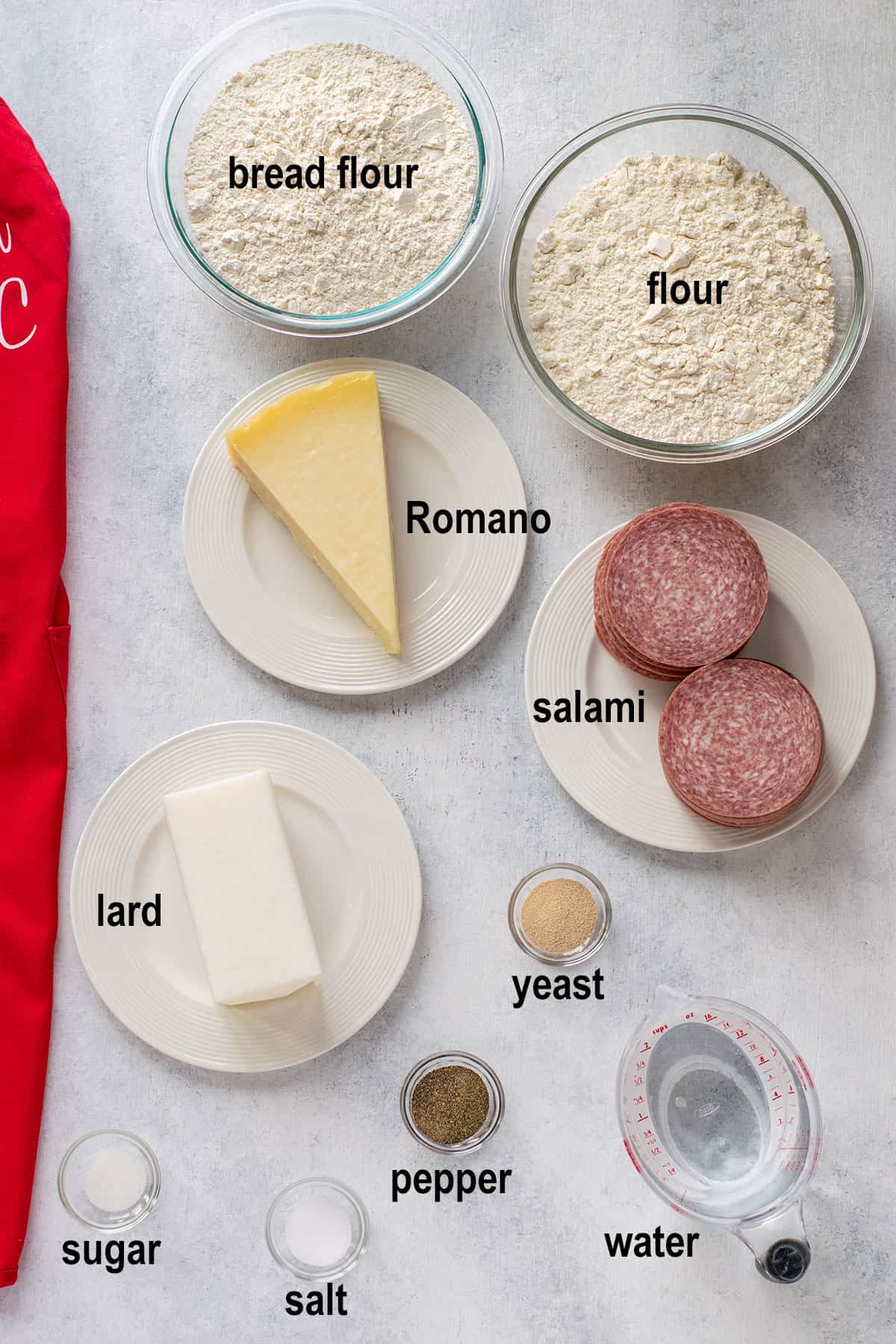
Lard: This is an old-school, traditional Casatiello recipe, so it calls for lard, which is pork fat. It's basically the same as bacon grease that has solidified. It makes the crust tender and adds signature flavor to the dough.
Look for lard (affiliate link) in the refrigerated section of your grocery store's meat department, near the bacon. It usually comes in a box, similar to how butter is sold. It can be easy to miss, so ask a worker to find it for you, if needed.
We've never tried substituting anything for the lard, and just use it once a year to make our Easter bread. But other lard breads exist, such as prosciutto bread.
Interestingly, fresh lard from the refrigerated section does not contain trans fats and has less saturated fat than butter. So, using lard may be a healthier choice than using vegetable shortening, according to Prevention, since shortening contains partially hydrogenated fats (trans fats).
Salami: If we lived in Italy, we would use Neapolitan salami. But here in America, my family uses hard salami in our Casatiello.
The key is to have it sliced ¼-inch thick and then cut it into one-inch pieces. I don't recommend cubing it or dicing it, because those larger pieces will create large air pockets, or gaps, when the rolled bread is baked.
Pecorino Romano: Pecorino, made from sheep's milk, is traditionally used in this stuffed Easter bread to symbolize sacrificing the lamb to God. It brings salty, sharp flavor and is so delicious!
I also use Pecorino in my Italian Sausage Bread.
Pepper: Ground black pepper is one of Casatiello's signature ingredients. We're adding it with the filling and also on top of the shaped ring of dough.
Optional Eggs on Top: Authentic Casatiello calls for four whole, fresh eggs to be placed on top of the ring of stuffed dough. Each egg has two strips of dough forming a cross enclosing them. When baked, the eggs taste similar to hard-boiled eggs.
In my family, we usually don't make Casatiello with eggs on top, so feel free to skip them if you wish.
How to make it
See the card at the end of this post for the full recipe, but here's an overview.
Make the dough
(Note that the photos below show a double batch of dough.
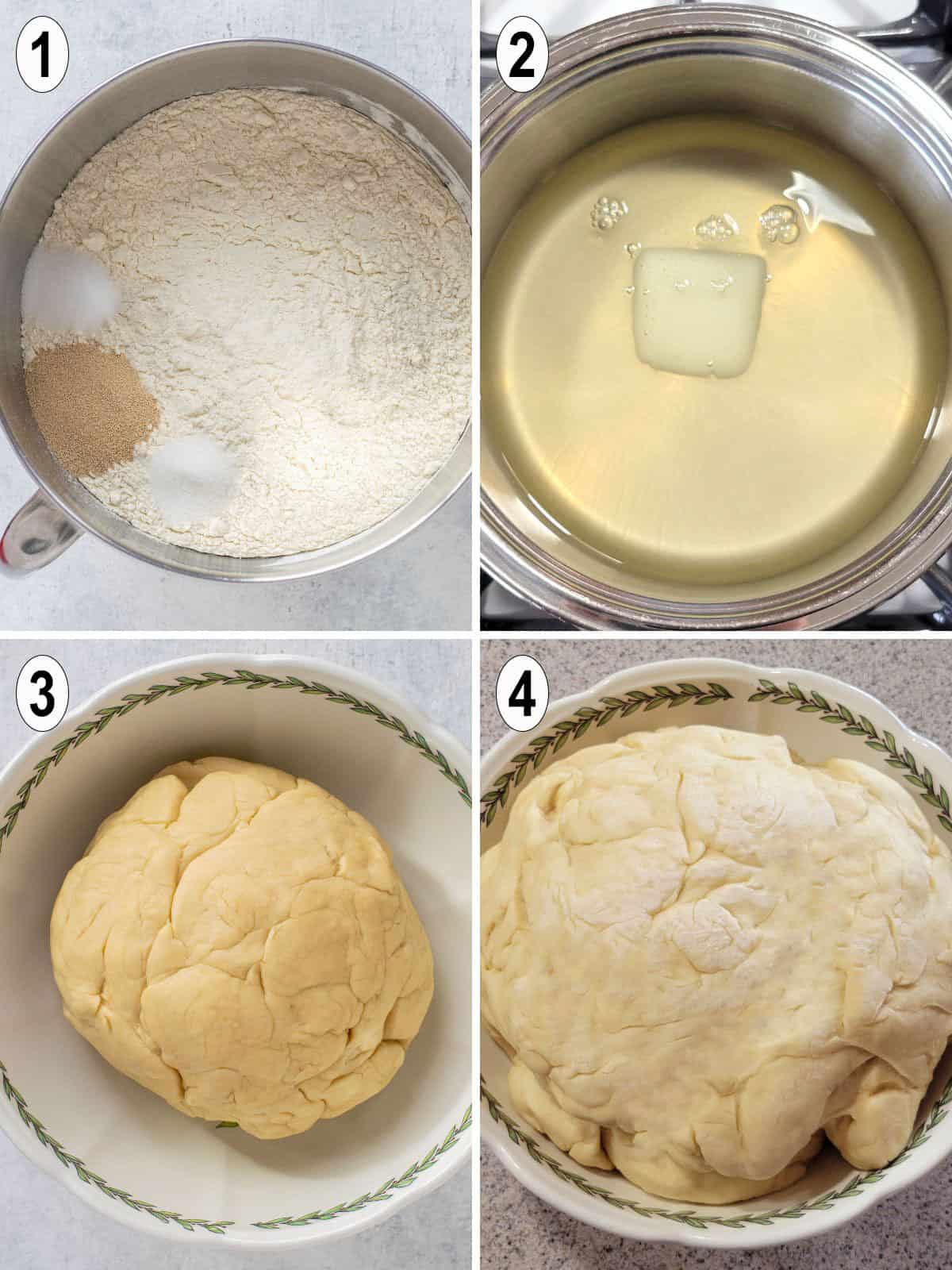
- Add the flour, yeast, salt and sugar to the bowl of a large standing mixer.
- Melt four ounces of lard on the stove. Stir in five ounces of water to cool it off.
- Add warm water and the lard mixture to the bowl. Mix briefly, then knead for 10 minutes until the dough is smooth.
- Let the dough rise for two hours, covered.
Fill and shape the loaf
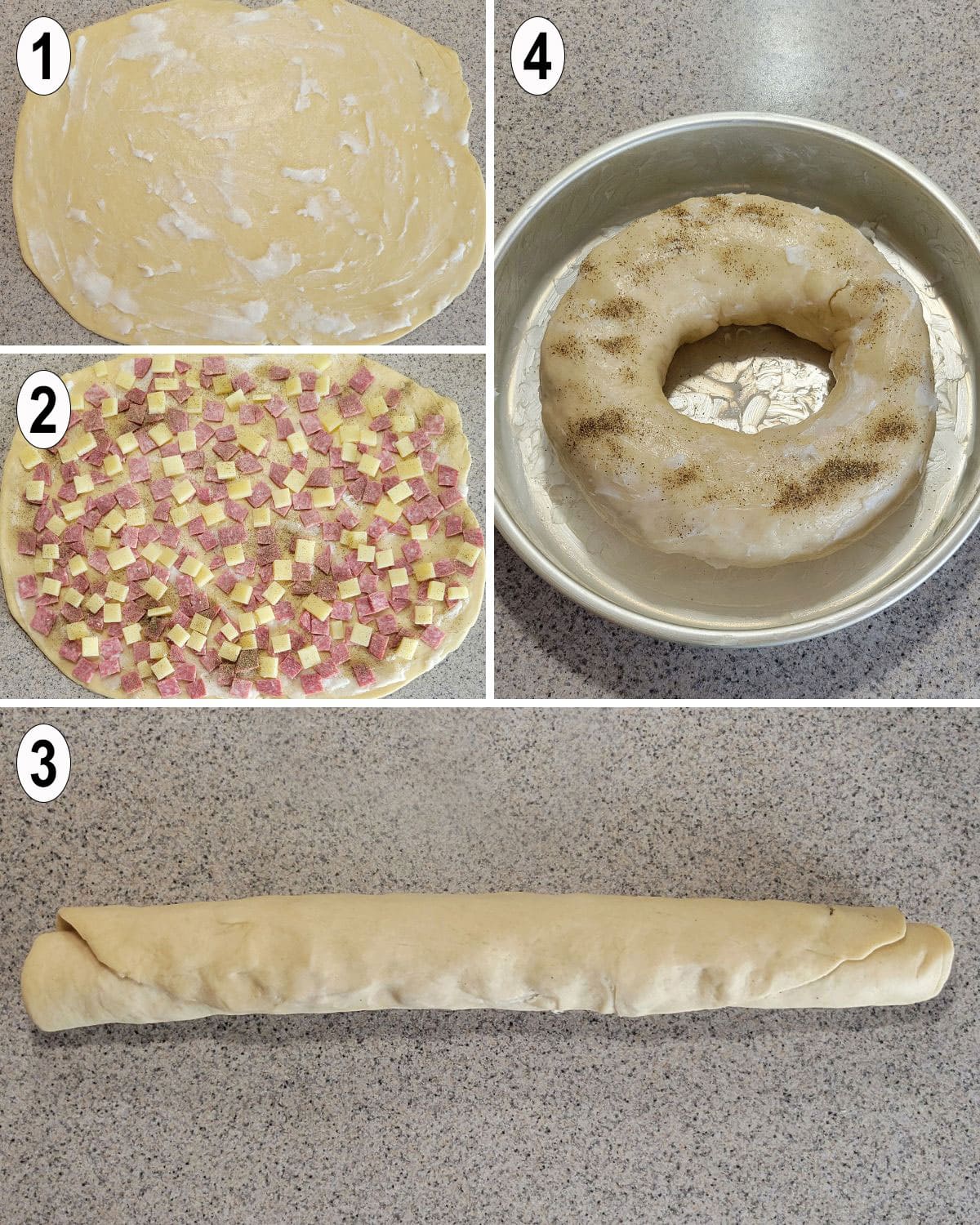
- Roll the dough into a rectangle. Spread on some lard.
- Top with pieces of salami and Pecorino cheese, plus black pepper.
- Roll into a log.
- Shape into a ring and top with more lard and pepper. (See the recipe card for how to add four whole eggs on top.) Place it in a greased pan and let the filled loaf rise for three hours, covered.
- Bake the Casatiello until golden brown.
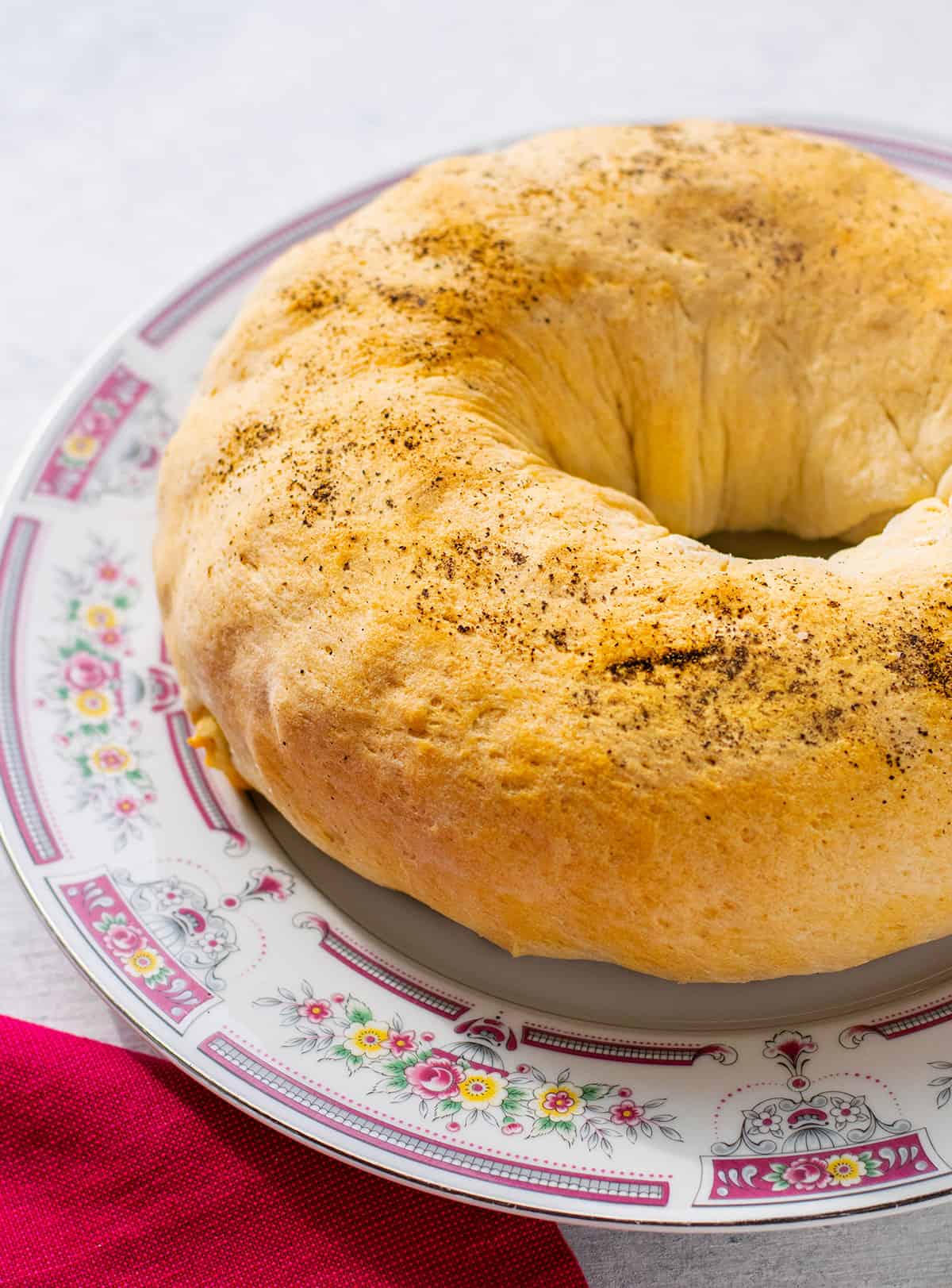
Recipe tips
- Don't bake this in a pan with a removable bottom, because melted lard will leak out into your oven. (I tried that once, and it set off my smoke alarm!)
- While baking, if the bread is getting too brown on top but the inner part of the ring is too pale, you can lightly cover the Casatiello with foil and bake it for an extra 5-10 minutes.
- To really brown the inner part of the ring, you can remove the Casatiello from the pan during the last few minutes and finish baking the bread on a sheet of foil, with another sheet of foil loosely covering the bread.
Type of pan to use
You'll need a 10-inch round pan, and have a couple of options.
You can use a 10-inch tube pan without a removable bottom (affiliate link). (If it has a removable bottom, the lard will leak out during baking.)
In my family, we use a 10x3-inch round cake pan (affiliate link) and create a hole in the middle with an overturned small metal coffee can. But you could use a ball of aluminum foil in the center instead. Or, just make sure the bread ring is wide enough that it won't close in the middle during baking.
How to store Casatiello
Since this Neapolitan bread contains meat and cheese, it needs to be refrigerated. Once it has cooled, wrap it tightly in plastic and refrigerate it for up to four days. You can reheat slices in the microwave to soften the bread when you're ready to eat it.
Freezing it
Casatiello freezes well, but the whole loaf is usually too large to fit into a zip-top freezer bag.
If you're making loaves ahead of time and want to freeze them whole, you'll need to wrap them tightly in plastic once they've cooled. Then, wrap them in foil and freeze. For best quality, thaw and eat them within three months.
Or, you can freeze slices of Casatiello in a zip-top freezer bag.
Thawing it
To thaw a whole loaf of Easter bread, place it in the refrigerator overnight. To thaw a slice of Casatiello, place it in the microwave and use the defrost setting until the bread is soft and warm.
Casatiello vs. tortano
In Naples, tortano is another Easter bread similar to Casatiello. The only difference is that tortano includes hard-boiled eggs inside the dough, instead of eggs baked on top of the bread.
More recipes to try
- Escarole-Stuffed Pizza
- Pesto Deviled Eggs
- Italian Recipes for Lent
- No-Knead Italian Bread
- Crusty Italian Rolls
- 65+ Italian Appetizers
Enjoy!
If you try this Casatiello recipe, please leave a comment and a rating!
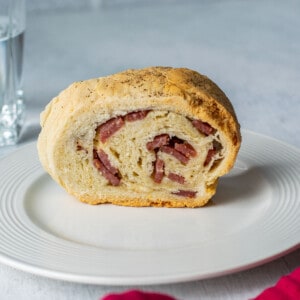
Casatiello (Neapolitan Easter Bread)
Ingredients
Casatiello Dough
- 4 ounces lard
- 5 ounces cold water
- 2 cups bread flour (scoop and level off the cups)
- 2 cups all-purpose flour (scoop and level off the cups)
- 2 ¼ teaspoons instant yeast (see notes for active yeast)
- ½ teaspoon granulated sugar
- ½ teaspoon salt
- 4 ounces warm water
Filling
- 3 ounces lard (room temperature)
- ¾ pound hard salami (sliced ¼-inch thick) (cut into small, flat pieces)
- 8 ounces Pecorino Romano (cut into small, flat pieces)
- ¾ teaspoon black pepper
Topping
- ¼ teaspoon black pepper
- 4 eggs (optional) (in their shells)
Instructions
- Melt four ounces of lard in a small pot on the stove over medium-high heat. Carefully pour five ounces of cold water over the melted lard to cool it off.
- In the bowl of a stand mixer fitted with dough hooks, add the bread flour, all-purpose flour, yeast, sugar and salt. Pour in the lard mixture and the warm water. Stir with the hooks on the lowest speed for 1-2 minutes to combine. Knead for 10-15 minutes (speed 2 on a Kitchenaid) until the dough is smooth. Place it in a greased bowl (you can spray the mixing bowl without cleaning it), and roll the dough around the bowl to coat it with the oil. Cover tightly with plastic wrap and let the dough rise for two hours.
- While the dough is rising, prepare the salami and cheese. Stack the salami slices and cut them into 1-inch pieces. Cut the Romano into ½-inch-long pieces that are ¼-inch thick. Cover and refrigerate until the dough has risen.
- When the dough has risen, punch it down and scrape it out onto a clean, floured surface. If you'll be adding eggs on top of the loaf, pull away a fist-sized piece of dough and set it aside. Use a rolling pin to roll the remaining dough out into an 11x16 rectangle. Grease a 10-inch tube pan (it must NOT have a removable bottom, or the lard will leak out) with some of the 3 oz. of lard. Be sure to grease the tube. Then, use your fingers to spread most of the 3 ounces of lard all over the flattened dough. Top it with the pieces of salami, spreading them out into a single layer. Repeat with the Pecorino pieces. Sprinkle ¾ teaspoon of black pepper all over. Press the filling down into the dough with the palms of your hands.
- Start rolling up the dough tightly from the long side. Continue rolling it up all the way. Pinch the ends closed. Spread any remaining lard on the surface of the log. Sprinkle on the remaining ¼ teaspoon of pepper. Transfer the rolled dough to the prepared pan, looping the dough into a circle. Pull and stretch the log as needed to lengthen it so the two ends meet and the dough is an even height all around. Push the two ends together and smooth them as best you can.
- If you're adding the eggs on top, roll out the fist-full of dough and cut it into 8 strips. Wash and dry the four eggs. Place them on top of the dough, spacing them apart evenly. Push them down gently. Place two strips of dough in a cross pattern over each egg, pressing the tips of the dough strips onto the loaf.
- Cover with a towel and let the stuffed dough rise for at least three hours.
- When the dough has another 20 minutes left to rise, prepare the oven. Remove the top rack to make room. Preheat the oven to 375 degrees F. When the dough is ready, bake the casatiello on the center rack for 50-60 minutes or until golden brown. If the top is getting too dark and the sides need longer to bake, you can loosely cover the bread with a sheet of foil to finish baking it. If using a tube pan, you can remove the bread from the pan and finish baking it on a sheet of foil placed on the center rack, and cover the top with foil if needed.
- When the Casatiello is done, remove it from the pan and place it on a wire rack to cool. Serve warm or let it cool completely and wrap it in plastic, then store it in the refrigerator for up to four days. Reheat slices in the microwave to soften the bread to eat. You also can eat the bread cold or at room temperature.
- To freeze a whole loaf, wrap it in plastic, then foil and freeze for up to three months. You also can freeze leftover slices of the bread by placing them in a zip-top freezer bag and defrosting them in the microwave as needed.
Notes
Nutrition
(Recipe Source: My mom, who is from Naples.)


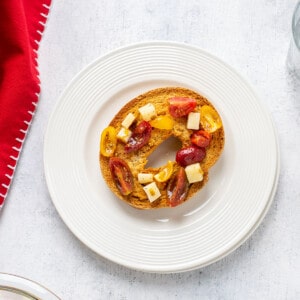

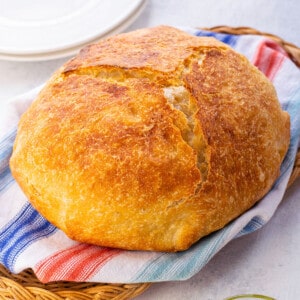
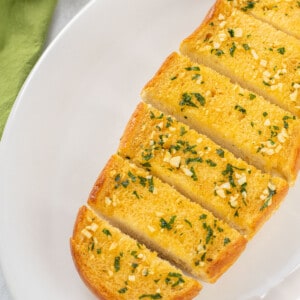

Comments
No Comments